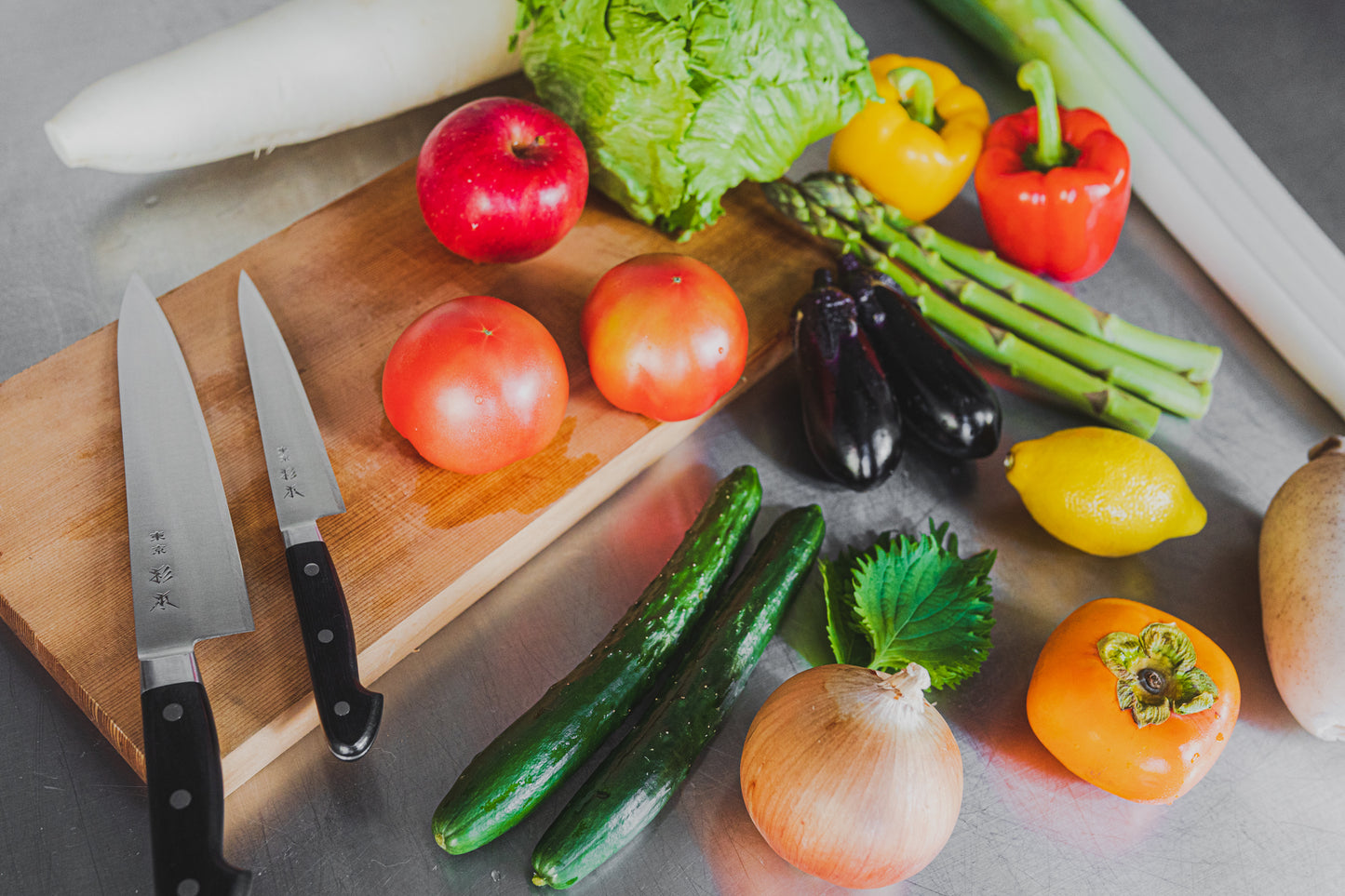
Home chefs often ask about the general-purpose knives we carry in our store. Our straightforward answer is Gyuto and Santoku knives. These two types are the most popular choices for home chefs in Japan. Their names are now widely recognized internationally, so many readers may already be familiar with them.
However, can Gyuto and Santoku knives be considered general-purpose knives for every culinary culture? The answer is no.
Gyuto and Santoku knives are popular and essential tools for home chefs in Japan because they meet the needs of Japanese culinary culture, particularly for home-cooked dishes. These knives are designed to cut the most commonly used ingredients in Japanese home meals.
Knives are essential tools for cooking. Just as we use petty knives to cut smaller ingredients like fruits, Gyuto and Santoku knives are primarily used to cut ingredients, which are typically sold in Japanese grocery stores.
One key difference we've observed is that meat is sold differently in different countries.
With this in mind, let's explain why Gyuto and Santoku knives are considered general-purpose knives in Japan.
The ingredients used in Japanese homes are not necessarily different from those used overseas. We have beef, pork, chicken, fish, and vegetables, just like customers do in other countries.
However, how these ingredients are sold can differ. In Japan, meat usually comes without bones. Bones are typically removed before the meat is sold. For some dishes, like fried chicken, chicken legs are sold with bones, but they are intended to be cooked and served with the bones intact, not removed by the customer at home.
Readers may wonder about fish. Fish are usually sold in two ways: with bones and without bones. Similar to other meats, fish with bones are cooked with bones, and fish without bones are cooked without bones.
Therefore, Japanese home chefs do not typically need to remove or cut through bones. Given this culinary culture, where softer ingredients are the norm, Gyuto and Santoku knives have become the most sought-after general-purpose knives for home chefs.
When customers ask us about the general-purpose knives we sell, our answer is Gyuto and Santoku knives. However, this answer may change if the common ingredients used at home differ from those in Japan.
Do you often buy meat with the bones attached? Do you frequently separate meat from bones at home when you cook? Do you often separate joints of meat? Do you use hard ingredients not commonly used in Japan?
If you answered yes to any of these questions, a Gyuto or Santoku knife may not be the best general-purpose knife for you.
Our purpose in posting these columns is to share our insights and knowledge about knives.
One of the most common questions we receive at our store is about the general-purpose knives we carry. Our answer is Gyuto and Santoku knives, but there's a caveat: these knives are best suited for the typical ingredients used in Japanese homes.
We hope this column provides insight into how the definition of general-purpose knives can vary between culinary cultures.